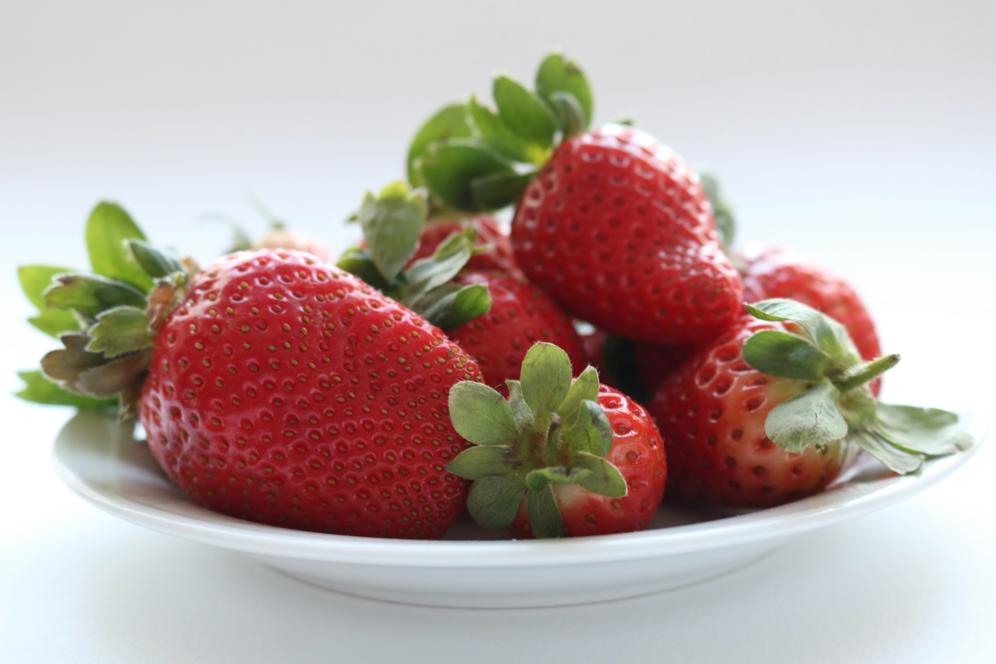
Unlock the Secrets: The Best Practices For Growing Strawberries At Home
Summary. The article “The Best Practices For Growing Strawberries At Home” outlines essential tips for successful strawberry cultivation. It emphasizes choosing the right variety suited for the local climate, such as June-bearing or everbearing types. Proper soil preparation is crucial, with recommendations for well-draining, nutrient-rich soil. The article stresses the importance of sunlight, suggesting a location that receives at least six hours of direct sunlight daily. Watering techniques are highlighted, with an emphasis on consistent moisture without waterlogging. Fertilization
Growing strawberries at home can be a rewarding endeavor that marries the joy of gardening with the satisfaction of nurturing your own fresh produce. Have you ever savored the taste of a sun-ripened strawberry plucked right from the vine? This article will guide you through best practices for cultivating juicy strawberries, from selecting the right varieties to understanding soil conditions and watering techniques. Whether you have a sprawling backyard or a small balcony, we’ll cover essential tips and tricks to maximize your yield and ensure your strawberry plants thrive.
Get ready to transform your gardening efforts into a delicious harvest as we explore everything you need to know about growing strawberries at home!
The Best Practices For Growing Strawberries At Home
The Best Practices For Growing Strawberries At HomeGrowing strawberries at home can transform your garden into a vibrant place brimming with sweetness and color, not to mention the joy of harvesting your own luscious fruits. To cultivate these delightful berries successfully, it’s essential to understand a few key practices that will yield the best results. First, select the right variety based on your climate—June-bearing strawberries thrive in temperate zones, while everbearing types can provide fruit from spring through fall. Have you considered the soil? Well-drained, loamy soil enriched with organic compost creates the perfect environment for your plants.
Planting strawberries in raised beds can enhance drainage and yield a healthier crop; just ensure they receive full sunlight for at least 6-8 hours a day. Watering consistently, yet carefully—frequent but not excessive—is crucial; strawberry roots are shallow and can suffer from rot in overly damp conditions. Have you thought about pest management? Introducing companion plants like marigolds can deter harmful insects, while encouraging pollinators to visit your garden. As your strawberries bloom, regular mulching can prevent weeds, maintain moisture, and keep the fruits clean—who wants dirt on their delicious strawberries? Beyond the basics, consider the benefits of organic practices to enhance flavor and health benefits.

Investigating local resources or community gardening groups can offer even deeper insights into successful techniques tailored to your region’s unique conditions. Looking ahead, genetic advancements in strawberry cultivation present exciting possibilities; imagine tastier, more resilient varieties emerging in the coming years. The process may not always be straightforward, but the thrill of biting into a sweet, sun-ripened strawberry plucked from your own patch makes every effort worthwhile. What are your go-to tips for a fruitful strawberry garden? Engaging with the community can provide invaluable perspectives and inspire a fruitful gardening adventure.
Important Keynote And Things To Know
Welcome, strawberry enthusiasts! 🌱🍓 Today, we’re diving into the juicy world of growing strawberries at home – yes, that means your very own berry bonanza right in your backyard (or balcony)!First up, let’s talk location. Strawberries are sun-lovers, so find a spot that gets at least 6-8 hours of sunlight a day. Next, consider the soil – they prefer it well-drained and a bit on the acidic side. Think of it like a spa day for your berries!Now, here’s a fun twist: companion planting! Planting strawberries with herbs like basil or lettuce not only maximizes your space but can also keep those pesky pests away. Also, don’t forget to water them regularly but avoid drowning them – nobody likes soggy strawberries!Ah, and let’s chat about mulching. It helps retain moisture and keeps those weeds at bay. Plus, once you see that first blush of red, you’ll want to do a little victory dance!So grab your garden gloves, roll up your sleeves, and let’s make your garden the berry best it can be! 🍓🌼 Happy gardening!
Do Coffee Grounds Help Strawberries?
Do Coffee Grounds Help Strawberries? When it comes to the best practices for growing strawberries at home, you’ll find that unconventional tips can be surprisingly effective. One such tip that frequently circulates among gardening enthusiasts is the use of coffee grounds. Rich in nitrogen, coffee grounds not only enrich the soil but also improve its structure, aiding in moisture retention—a crucial factor for strawberries thriving in sunny locations. But do they actually deliver the results they promise? Recent studies suggest that incorporating coffee grounds into your strawberry beds can enhance soil fertility and attract beneficial earthworms, known for aerating the soil and breaking down organic matter.
Plus, the slight acidity of coffee grounds is often welcomed by strawberry plants, which prefer a pH level of 5 to However, moderation is key; using too many grounds can lead to overly acidic soil, potentially harming plants rather than helping them. Have you ever wondered how local gardeners have found success? Ana, a passionate gardener, swears by a 3:1 ratio of soil to coffee grounds, which she claims boosts her bloom yield dramatically.

What’s more interesting is the fact that coffee grounds also serve as a natural pest deterrent, repelling snails and slugs that tend to make feasts out of your precious berries. While it’s essential to embrace innovative methods, it’s equally crucial to remain aware of contrasting perspectives. Some experts argue that the benefits of coffee grounds may be overstated and that they shouldn’t replace other organic fertilizers. As the gardening community evolves, balancing innovative practices with time-tested traditions is paramount.
People Also Ask
What is the trick to growing strawberries?
Growing strawberries successfully involves several important practices that can help ensure a bountiful harvest. Here are some key tips:1. Choose the Right Variety: Decide between June-bearing, everbearing, or day-neutral strawberries based on your climate and when you want to harvest. June-bearing varieties produce one large crop in late spring, while everbearing and day-neutral varieties yield fruit throughout the growing season. 2. Site Selection: Choose a well-drained location with full sun (at least 6-8 hours of sunlight per day). Strawberries thrive in fertile soil with a pH of 6. 0 to 6. 8.
Avoid areas where tomatoes, peppers, or eggplants have grown in the last few years to prevent disease. 3. Soil Preparation: Amend the soil with organic matter, such as compost, to improve structure and fertility. Ensure the soil drains well to prevent root rot. 4. Planting: Plant strawberries in early spring or fall, depending on your climate. Space them about 12-18 inches apart in rows to allow for proper air circulation and sunlight exposure. Make sure the crown of the plant is at soil level to avoid rot. 5.
Watering: Keep the soil consistently moist, especially during fruit development. Avoid overhead watering; instead, use drip irrigation to reduce the risk of fungal diseases. 6. Mulching: Apply mulch, such as straw or plastic, to retain moisture, suppress weeds,
What are the best practices for strawberries?
Growing strawberries successfully involves several important practices that ensure healthy plants and a good yield. Here are some best practices for growing strawberries: Planting1. Choose the Right Variety: Select a strawberry variety suited to your climate and intended use (e. g. , June-bearing, everbearing, or day-neutral). 2. Soil Preparation: Strawberries prefer well-draining soil rich in organic matter. Test the soil pH; it should ideally be between 5. 5 and 6. 8. Amend with compost or well-rotted manure to improve fertility. 3.
Location: Plant strawberries in a sunny area that receives at least 6-8 hours of direct sunlight per day. Avoid locations with strong winds. 4. Planting Time: In most areas, spring is the best time to plant strawberries. In warmer climates, fall planting can also be effective. 5. Spacing: Space the plants 12-24 inches apart in rows about 3 feet apart to allow for air circulation and ease of maintenance. Care and Maintenance6. Watering: Strawberries need consistent moisture, especially during fruit development.
Water them deeply and regularly—about 1 inch of water per week, depending on rainfall. 7. Mulching: Apply a layer of mulch (straw, wood chips, or plastic) to retain moisture, suppress weeds, and keep fruit clean. 8. Fertilization: Use a
What not to do when growing strawberries?
When growing strawberries, there are several common mistakes and practices to avoid to ensure a successful harvest. Here’s a list of what not to do:1. Neglecting Soil Quality: Don’t plant strawberries in poor or compacted soil. They thrive in well-draining, loamy soil with good organic matter. 2. Ignoring pH Levels: Avoid planting strawberries in soil with an unsuitable pH. They prefer a pH of 5. 5 to 6. 8. Test your soil and amend as necessary. 3.
Overwatering or Underwatering: Don’t overwater or let them dry out completely. Strawberries require consistent moisture, so ensure adequate watering while avoiding soggy conditions. 4. Planting Too Close Together: Don’t overcrowd your strawberry plants. They need space for air circulation and light penetration to prevent disease. 5. Skipping Mulching: Don’t forget to use mulch. Mulch helps retain moisture, suppress weeds, and keep the soil temperature consistent. 6. Ignoring Sunlight Requirements: Avoid planting in shaded areas.
Strawberries need at least 6-8 hours of direct sunlight daily to thrive. 7. Neglecting Pest and Disease Control: Don’t ignore signs of pests or diseases. Regularly inspect your plants and take action promptly. 8. Forgetting Fertilization: Don’t overlook the necessity of fertilization. Use an appropriate fertilizer at planting and during the growing
What do coffee grounds do for strawberry plants?
Coffee grounds can be beneficial for strawberry plants in several ways:1. Nutrient Source: Coffee grounds are rich in nitrogen, which is an essential nutrient for plant growth. When added to the soil, they can help provide a nutrient boost to strawberry plants. 2. Soil Structure Improvement: They can improve soil structure by enhancing aeration and drainage, which is important for healthy root development. 3.
pH Level Adjustment: While coffee grounds are only mildly acidic, they can help lower soil pH slightly, which can be beneficial for strawberries that prefer slightly acidic soil. 4. Organic Matter: As they break down, coffee grounds contribute organic matter to the soil, improving overall soil health and fertility. 5. Pest Deterrent: Some gardeners have noted that coffee grounds may help deter certain pests, like slugs and snails, when sprinkled around the base of plants. 6.
Mulch: Coffee grounds can be used as a mulch to help retain soil moisture and suppress weeds. When using coffee grounds, it’s best to do so in moderation, as excessive amounts can lead to imbalances in soil nutrient levels. Mixing the grounds with other organic materials, such as compost, can help distribute the nutrients more evenly.
The End Of The Journey
If you’ve ever stared longingly at the perfect strawberries in your local market, wondering why your homegrown efforts don’t quite match up, you aren’t alone. Many aspiring gardeners face the common challenge of grappling with how to cultivate juicy, vibrant strawberries at home, leaving them frustrated and disheartened. But fear not! Knowing the best practices for growing strawberries at home isn’t just a luxury for seasoned horticulturists; it’s a journey that can lead you to sweet success right in your backyard.
This topic is not just relevant; it’s crucial for those who want to savor the delight of fresh strawberries without the hefty price tag or questionable sourcing of store-bought varieties. Imagine plucking a sun-ripened berry and enjoying it mere minutes after harvesting—it’s a garden dream that can become your reality! So, what are the secrets that will transform your strawberry patch from struggle to splendor? In this post, we’ll delve into tips that will help you tackle the common pitfalls and flourish with fruitful results. From soil preparation to pest control, we will break down each vital step you need to master.
Get ready to dig deep and discover the delightful world of strawberry cultivation, where the sweetest berries await your gardening prowess! Let’s uncover the best practices for growing strawberries at home and turn your gardening fears into fruitful triumphs.
FAQs Uncovered: Get The Facts Here
What are the best conditions for growing strawberries at home?
Strawberries thrive in well-drained, fertile soil with a pH between 5.5 and 6.8, in a location that receives at least 6 to 8 hours of sunlight daily.
How often should strawberries be watered?
Strawberries should be watered regularly, about 1 to 1.5 inches per week, ensuring the soil remains consistently moist but not waterlogged.
Reference:







